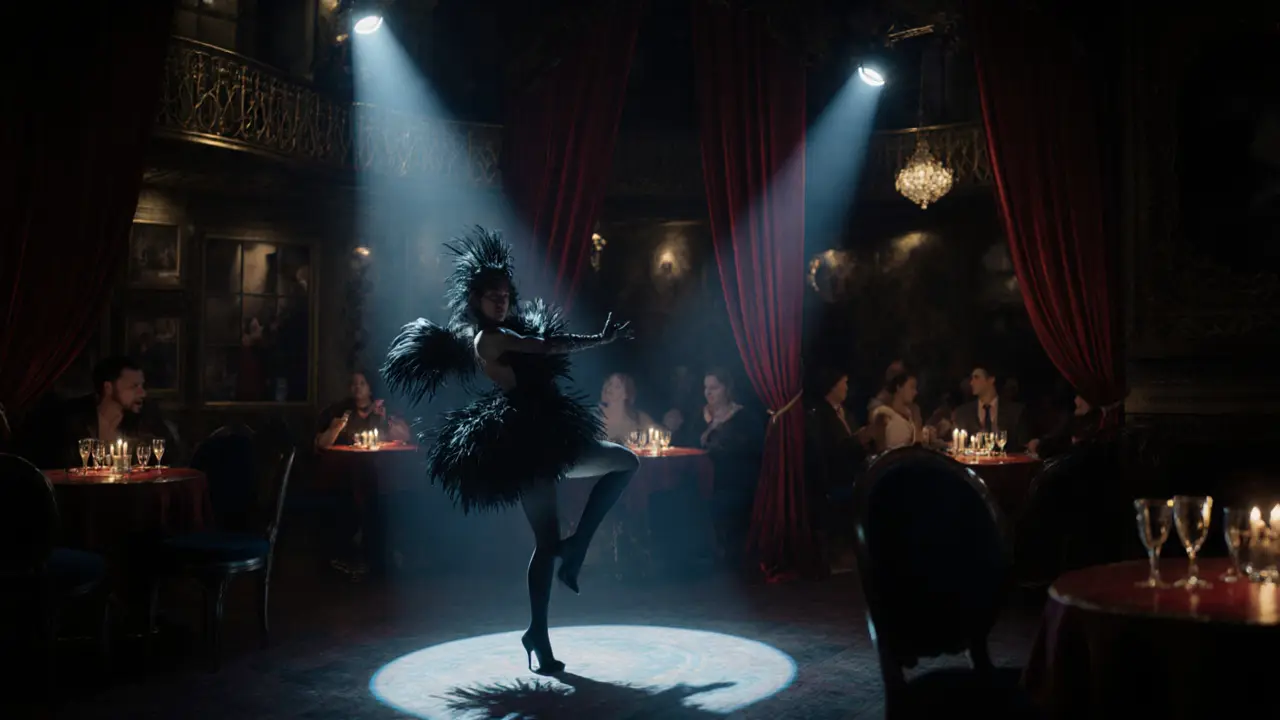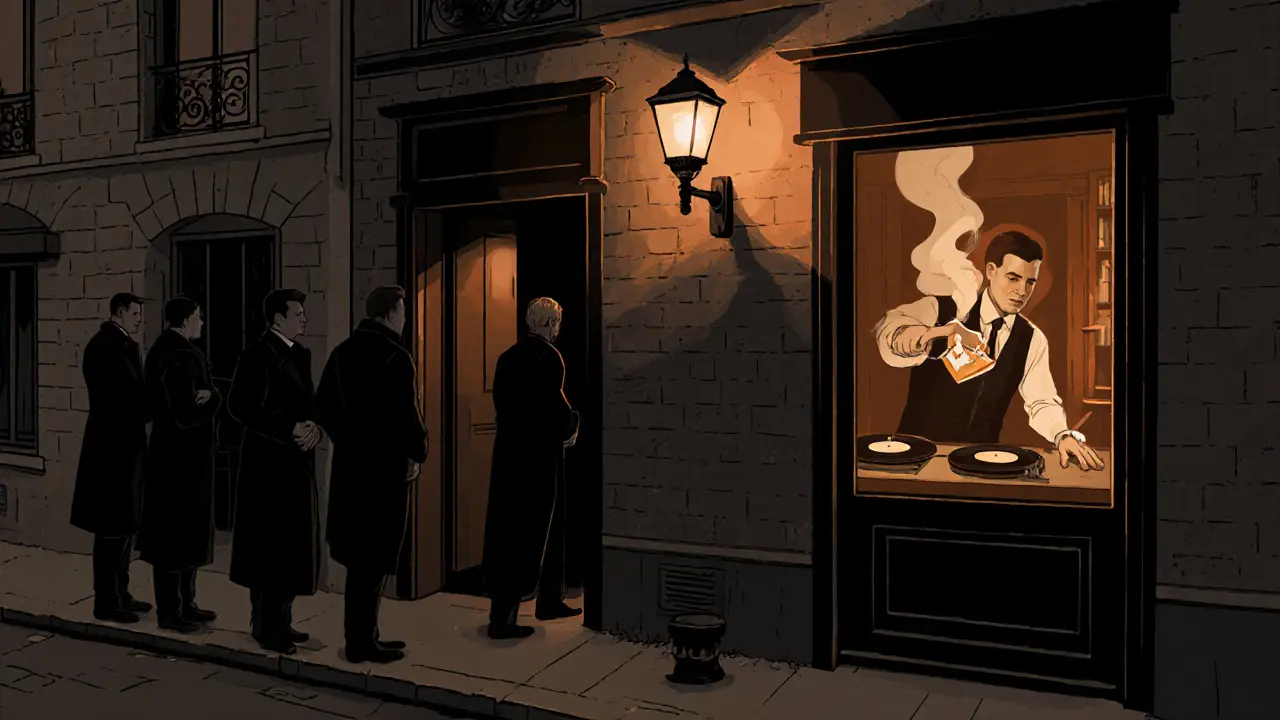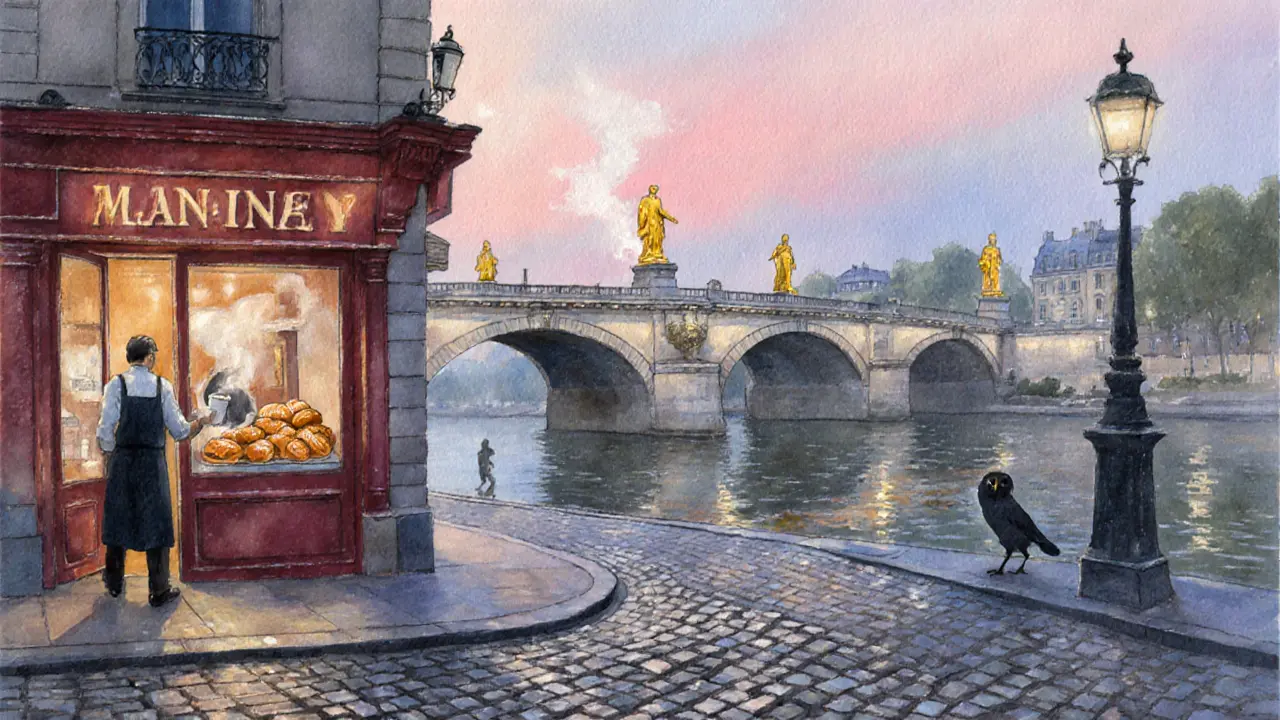The Art of Parisian Nightlife: From Cabarets to Late-Night Cafés

Paris doesn’t sleep when the sun goes down. While tourists head back to their hotels, the city transforms. The lights of Montmartre flicker on, jazz spills from basement clubs in Saint-Germain, and the scent of espresso and cigarette smoke lingers in narrow alleys. This isn’t just partying-it’s a ritual, a tradition passed down through generations. Parisian nightlife isn’t about chasing trends. It’s about rhythm, mood, and knowing where to sit, when to order, and how long to stay.
The Cabaret Legacy: More Than Just Can-Can
The Moulin Rouge isn’t a relic-it’s alive. Since 1889, it’s drawn crowds with its red windmill and feathered dancers. But the real magic isn’t in the spectacle. It’s in the intimacy. At Le Chat Noir, once a haunt for poets and anarchists in Montmartre, the atmosphere still hums with rebellion. Today’s cabarets don’t just entertain-they tell stories. The shows are shorter now, more polished, but the soul remains. You won’t find American-style burlesque here. Parisian cabarets blend theater, music, and satire. The performers don’t just dance-they act. One night, you might see a singer reinterpret Edith Piaf with a punk twist. Another, a mime tells a silent story about lost love under a single spotlight.
Reservations are a must. Walk-ins rarely get good seats. Book at least two weeks ahead if you want a front-row table. The price? Around €80-€150. It’s not cheap, but you’re not just paying for a show. You’re paying for a century of history, a glass of champagne in a gilded box, and the feeling that you’re part of something older than the Eiffel Tower.
Where the Locals Go: Hidden Bars and Speakeasies
If you want to see how Parisians actually unwind, skip the tourist traps. Head to Le Baron in the 11th arrondissement. It’s unmarked. No sign. You find it by asking a local or following the line of people in black coats. Inside, it’s dim, loud, and packed with artists, musicians, and fashion designers. The cocktail menu changes weekly. One month, it’s lavender-infused gin with smoked salt. The next, it’s a bourbon sour with black tea syrup.
Bar des PMU in the 14th is another secret. It looks like a betting shop from the outside-because it is. But inside, it’s a cozy bar with wooden booths, vinyl records spinning, and a bartender who remembers your name after one visit. No one rushes you. You order a pastis, sip slowly, and watch the night unfold. This isn’t a place to check your phone. It’s a place to disappear for an hour-or three.
Late-Night Cafés: The Soul of Paris After Midnight
Parisian cafés don’t close at 11 p.m. They close when the last person leaves. In the 6th arrondissement, Les Deux Magots still serves coffee at 2 a.m. on weekends. The chairs are worn, the walls covered in old photos, and the waiters don’t flinch when you ask for a refill at 1:30 a.m. This isn’t a café for tourists taking selfies. It’s for students finishing essays, writers scribbling in notebooks, and old men playing chess in silence.
Le Procope, founded in 1686, claims to be the oldest café in Paris. It’s true. Voltaire and Rousseau once argued here. Today, it’s slightly more touristy, but the energy is still there. Order the café crème. Don’t ask for cream on the side. In Paris, it comes already mixed. Sit by the window. Watch the streetlamps glow on the cobblestones. No one will bother you. That’s the point.

Brasseries and Bistros: The Midnight Meal
Parisians don’t eat dinner at 7 p.m. They eat at 9, sometimes 10. And they don’t stop there. Many brasseries stay open until 2 a.m. Le Comptoir du Relais in Saint-Germain is a classic. The menu is simple: steak frites, duck confit, onion soup. The wine list is short but perfect. The chef works the kitchen alone. He nods when you walk in. He knows you’re not here for the food. You’re here for the warmth.
At Le Petit Vendôme, tucked behind the Opera, they serve oysters until 3 a.m. on Fridays. The salt air from the Normandy coast still clings to the shells. You eat them with a squeeze of lemon and a glass of Muscadet. The tables are close. Strangers become friends over shared platters. No one talks about the day’s news. They talk about the music they heard last night, the book they’re reading, or the person they almost met.
The Rhythm of the Night: When and Where to Be
Parisian nightlife doesn’t follow a clock. It follows a pulse. Friday and Saturday are the peak nights. But the real magic happens on Wednesday and Thursday. That’s when the crowds thin, the music gets deeper, and the locals take over. If you want to feel like you’re part of the city-not just visiting it-go midweek.
Start late. Don’t rush. Have dinner at 10 p.m. Then walk. No map. Just follow the sound of music. Maybe you’ll stumble into a jazz club in the 10th. Or a vinyl bar in the 12th where they play only French chanson. Maybe you’ll find a rooftop terrace with a view of the Seine and no one else around.
Don’t expect clubs to open before midnight. They don’t. The real party starts at 1 a.m. and lasts until sunrise. The bouncers aren’t strict. They’re tired. They’ll let you in if you’re dressed nicely-not flashy, just neat. No sneakers. No baseball caps. Paris doesn’t care how much money you have. It cares how you carry yourself.

What Not to Do
Don’t ask for a “happy hour.” Paris doesn’t have them. Drinks are priced the same all night. Don’t order a vodka soda. It’s not a thing here. If you want something light, ask for a kir royale-white wine with crème de cassis. Or a glass of natural wine from the Loire Valley. It’s cheaper than you think.
Don’t take photos inside cabarets or speakeasies. It’s rude. The magic is in the moment, not the feed. Don’t try to haggle for a table. You can’t. And don’t expect English menus everywhere. Learn three words: une bière, un café, l’addition. That’s enough.
The Aftermath: Sunrise in Paris
By 6 a.m., the streets are quiet. But not empty. You’ll see bakers opening their shops, delivery drivers unloading bread, and a few night owls walking home with coffee in hand. If you’re lucky, you’ll catch the first light hitting the Pont Alexandre III. The gold statues glow. The Seine is still. No one is around. For a moment, it’s yours.
That’s the real Parisian night. Not the clubs. Not the shows. The silence after the music ends. The smell of fresh bread. The way the city exhales when the world is asleep.
What time do Parisian bars and clubs actually open?
Most bars open around 9 p.m., but the real nightlife starts after midnight. Clubs typically don’t fill up until 1 a.m. or later. If you arrive before 11 p.m., you’ll mostly find locals having dinner or drinks. The energy shifts after midnight-this is when the music gets louder, the crowd denser, and the night truly begins.
Are cabarets in Paris worth the price?
Yes-if you go with the right expectations. You’re not paying just for a show. You’re paying for history, atmosphere, and a rare cultural experience. The Moulin Rouge and Lido offer polished, high-energy performances with costumes, lighting, and choreography you won’t find anywhere else. If you want something more intimate, try Le Chat Noir or La Cigale. These places feel more like a private gathering than a tourist show. The price includes a drink and a seat in a historic venue. It’s an experience, not a night out.
Where can I find good late-night food in Paris?
Le Comptoir du Relais, Le Petit Vendôme, and L’Avant Comptoir in the 6th are top picks. They serve classic French dishes until 2 a.m. or later. For something quick, head to a boulangerie open 24 hours-like Boulangerie Utopie in the 11th. They serve warm croissants, sandwiches, and coffee. Avoid touristy spots near the Eiffel Tower. The real late-night eats are tucked into quiet neighborhoods, often with no signs.
Is Paris nightlife safe at night?
Generally, yes. The main areas-Saint-Germain, Le Marais, Montmartre, and the Latin Quarter-are well-lit and patrolled. Avoid isolated streets near the périphérique or the northern suburbs. Stick to busy areas. Pickpockets exist, especially in crowded clubs, so keep your wallet and phone secure. Don’t walk alone after 3 a.m. in unfamiliar areas. But in the heart of the city, you’ll find Parisians out late every night. The city is designed for it.
Do I need to dress up for Paris nightlife?
Not fancy, but neat. No sweatpants, no flip-flops, no athletic wear. Parisians dress with care-even at a casual bar. For cabarets or upscale lounges, men wear dark jeans and a button-down. Women wear dresses or tailored pants. For a neighborhood bistro or jazz club, clean jeans and a nice top are enough. The rule isn’t about money-it’s about respect. Paris notices how you present yourself.
What’s the best way to get around Paris at night?
The metro runs until about 1:15 a.m. on weekdays and 2:15 a.m. on weekends. After that, take a taxi or Uber. The city has plenty of licensed cabs. Avoid unmarked cars. Walking is fine in central areas like the 6th, 7th, and 11th arrondissements. But don’t walk far after midnight if you’re unfamiliar. Use the Vélib’ bike-share system if you’re confident-it’s available 24/7 in many areas. Always check the last metro times before heading out.
Are there any free nightlife experiences in Paris?
Absolutely. Many jazz clubs in the 13th and 19th arrondissements have no cover charge on weekdays. Walk along the Seine after midnight-it’s quiet and beautiful. Sit on a bench near the Pont Neuf and listen to the water. Some bookshops, like Shakespeare and Company, host readings until late. And don’t miss the street musicians near Notre-Dame or in Montmartre. They play for tips, but you can just listen. Paris’s best nights aren’t always paid.
Parisian nightlife isn’t something you book. It’s something you live. You don’t plan it-you feel it. The city doesn’t shout. It whispers. And if you’re quiet enough, you’ll hear it.